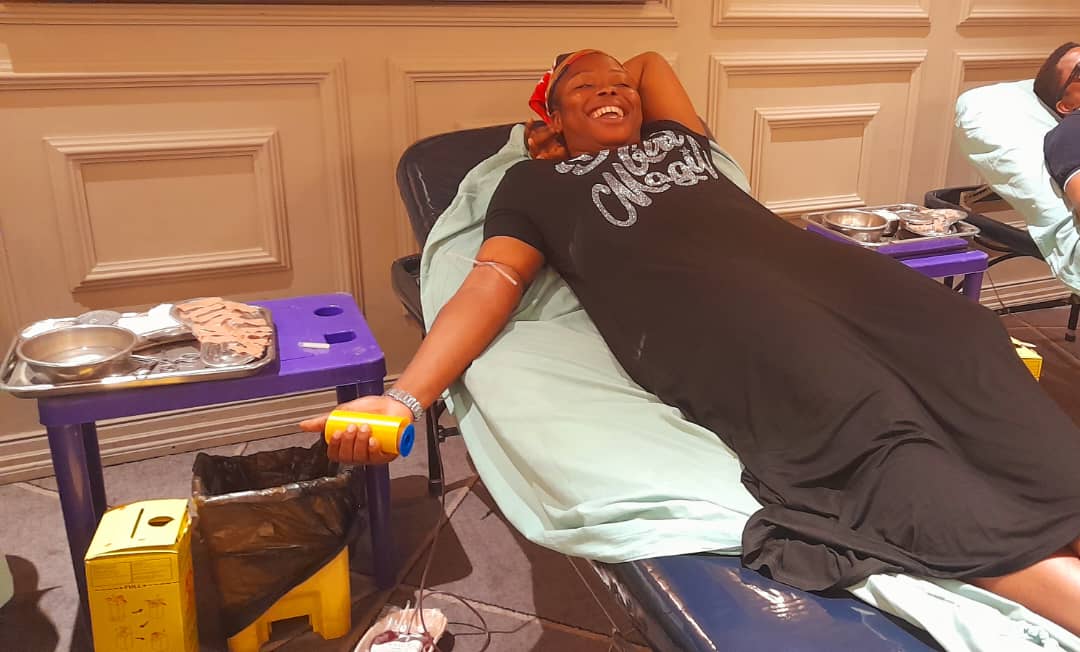It was a typical Tuesday morning when Jennifer woke up and began her daily routine. As she sipped her coffee, she noticed a flyer on her fridge advertising a local blood drive happening that day. She paused, remembering how she had meant to donate blood for quite some time but had never gotten around to it.
Jennifer knew the importance of blood donation - how it could save lives and help those in need. But like many people, the prospect of needles and blood made her a bit squeamish. Still, she decided today would be the day. She finished her coffee, grabbed her keys, and headed to the door towards the community center hosting the blood drive.
When she arrived, Jennifer was greeted by friendly volunteers who put her at ease and walked her through the process. After answering a few health questions, she was led to a comfortable bed where a nurse carefully inserted the needle and began collecting her blood. Jennifer braced herself but was surprised at how quick and painless it was.
As the blood flowed into the bag, Jennifer felt a sense of pride and accomplishment. She was doing something meaningful that could truly make a difference. After the donation was complete, she was given a snack and juice to help restore her blood volume.
Jennifer left the blood drive with a spring in her step, knowing that her simple act of donation could help save up to three lives. She made a mental note to come back again in the future, eager to continue doing her part to support this crucial community need.
Blood donation is a selfless act that plays a vital role in modern healthcare. Blood and its components - red cells, plasma, and platelets - are essential for treating a wide range of medical conditions and emergencies. When people donate blood, they are quite literally giving the gift of life to those in need.
Every two seconds, someone somewhere in the world requires blood. It may be a patient undergoing surgery, someone receiving treatment for cancer or other diseases, or a victim of a traumatic injury. The demand for blood is constant, as it cannot be manufactured artificially and must come from volunteer donors.
The process of donating blood is safe, simple, and takes less than an hour from start to finish. After answering some basic health history questions, the donor's arm is cleaned and a sterile needle is used to draw about a pint of blood. This is a tiny fraction of the body's total blood volume, which the donor's system quickly replaces.
Beyond the immediate impact, regular blood donation also provides health benefits to the donor. Studies show it can reduce the risk of heart attacks and strokes by lowering iron levels in the blood. Donors also receive a mini-physical, getting their blood pressure, pulse, temperature, and hemoglobin levels checked.
Unfortunately, less than 40% of the population is eligible to give blood, and only about 10% do so each year. This shortage means doctors often have to make tough decisions about how to allocate the limited blood supply. More volunteer donors are desperately needed.
That's why the story of Jennifer is so inspiring. By pushing past her initial hesitation and taking that first step to donate, she was able to experience the profound sense of fulfilment that comes from knowing her blood could save lives. It's a powerful reminder of the impact each of us can have through this simple but vital act of generosity.
Join us now! Call us at +2349120029752, +2348136427927 or visit our website at www.traumacareinternational.org/blooddonation to find out how you can donate and be a part of this global initiative. Let’s make every life count!
Register here👉: kingsforms.online/100dayscampaign
#100DaysOfLife #BloodDonation #SaveLives #TraumaCareIntl #EveryLifeCounts





What do you think?
0 Responses
To Comment, you must Sign In
Be the First to Post on this Topic